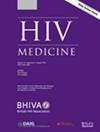Self-reported HIV viral load is reliable and not affected by adverse lived experiences of women living with HIV in British Columbia
Abstract
Introduction
HIV viral load (VL) is a key predictor of long-term health for women living with HIV. Here, we investigate how HIV VL self-reported by women living with HIV enrolled in the British Columbia CARMA-CHIWOS Collaboration Study relates to clinically measured HIV VL. Three HIV-related stigma scales and associations with selected socio-demographic characteristics, such as lifetime history of homelessness, history of substance use, ethnicity, and knowledge about ‘Undetectable = Untransmittable’, were also examined.
Methods
For 219 women enrolled between December 2020 and August 2023, self-reported HIV VL status (classified as undetectable ≤40 copies/mL or detectable >40 copies/mL) was compared with HIV VL obtained from chart review closest to, but before the date of self-report (SR). Sensitivity, specificity, predictive values, and likelihood ratios were calculated for the study sample overall and for socio-demographically defined subgroups. Concordance between self-reported HIV VL and (CC) clinical chart-derived values was examined by Cohen's kappa. Three HIV-related stigma scores were compared between women stratified by the concordance of their self-reported and chart review-based HIV VL.
Results
Ninety-five percent (208/219) of women were able to estimate their most recent HIV VL via self-report, and among them, 96% (200/208) were on antiretroviral therapy, 50% reported a history of homelessness, and 30% reported current substance use. Overall, the self-reported HIV VL was correctly estimated by 189 out of 219, and showed high overall concordance (86%) and moderate agreement (Cohen's kappa = 0.55) with HIV VL values derived from CCs. Correctly self-reported undetectable HIV VL showed high sensitivity (97.2%) and positive likelihood ratio (1.92), low negative likelihood ratio (0.06), moderate specificity (50%), and performed similarly across socio-demographic subgroups. HIV stigma scores did not differ between women who estimated their HIV VL correctly versus incorrectly. Of note, knowledge about ‘Undetectable = Untransmittable’ was lower (40%) among women who were not able to estimate their most recent VL than among those who did (74%).
Conclusions
Our findings confirm previous reports of high awareness of HIV VL by women in British Columbia, Canada, despite a high prevalence of adverse socio-demographic experiences in this cohort. Our data further suggest that despite highly stigmatized life experiences, women living with HIV in British Columbia have a strong awareness of their VL status.


 求助内容:
求助内容: 应助结果提醒方式:
应助结果提醒方式:


